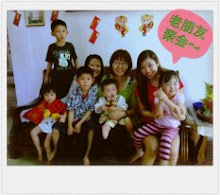Teaching 4 Years Old Children Based On Jean Piaget Theory
Children with 4 years old are in stage two : The Pre-operational
Stage based on Jean Piaget Theory. The mental
representation of the sensorimotor stage provides a smooth transition to
semiotic functioning in the pre-operational stage. This essentially means that
a child can use one object to represent another (symbolically). For example, a
child swinging their arms in a circular motion might represent the wheels on a
train, or sticking their arms out and running might symbolise the movement of
an aeroplane. This shows the relationships children can form between
language, actions and objects at this stage.
- A major characteristic of this stage is egocentrism: perception of the world in relation to oneself only. Children struggle to perceive situations from another point of view or perspective, as shown by Piaget and Inhelder’s Three Mountains Task (1956). In this study, children were asked what can be perceived from certain positions on a 3D model. See the diagram below for a clearer idea.
- Another feature of this stage is conservation. Children struggle to understand the difference in quantity and measurements in different situations. For example, suppose a child is shown a short, fat beaker full of water. When that water is transferred entirely to a tall, thin beaker – we would know the level of water is identical – only the beaker has changed. However, a child in this stage will conclude there is more water in the tall beaker, just because the level of water looks higher. Children in this stage also lack the required cognition to apply reversibility to situations; they cannot imagine objects or numbers reversed to their previous form. This will be explored in the next stage (where reversibility IS present).
- If your child repeatedly pushes others out of the way to be first in line, you can institute the “last will be first and first will be last” principle by simply telling him that his focus on self has earned him last place.
- If your child is frequently demands different foods, you can calmly but firmly say, “Your choices today are chicken nuggets or grilled cheese. I’ll come back when you have made your decision.”
- If your child grabs something out of another child’s hand, you can gently remove the toy and give it back to the other child and say, “We don’t take things from other children.” If it happens again, employ a time out or a removal of a privilege.
- If your child is being loud and distracting to others in church, remove him from the service and have him do some “church practice” at home using role play.
2. Examples of
conservation activity are :
- Conservation of number : Number is not change despite the rearrangement of objects.
- Conservation of length : The length of a string is unaffected by its shape or its displacement.
- Conservation of liquid amount : The amount of liquid is not changed by the shape of its container.
- Conservation of substance ( Solid Amount ) : The amount of substance does not change by changing its shape or by subdividing it.
- Conservation area : The area covered by a given number of two dimensional objects is unaffected by their arrangements.
- Conservation of weight : A clay balls weight the same even when its shape is elongated of flattened.
- Conservation of displacement : The volume of water that is displaced by an object depends on the volume of the object and is independent of weight, shape, or position of the immersed object.




0 comments:
Post a Comment